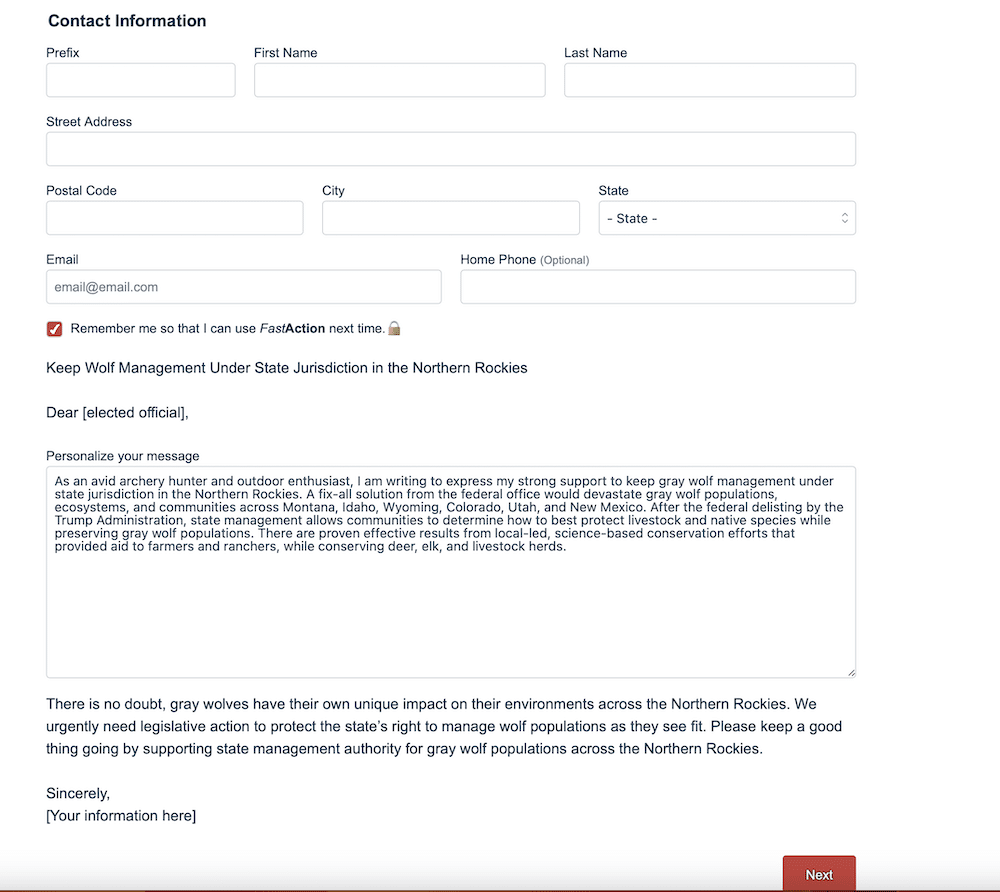If you want to protect and secure public land and ensure favorable laws regarding bowhunting, you must actively participate in the legislative process. Thankfully, Bowhunters United makes it easy for its members to get involved and stand up for wildlife, wild places and the right to bowhunt.
To get more involved in the process, it helps to understand the process. As a general guidance, state wildlife agencies have some delegated authority and can establish rules or regulations within the limits of authorizing laws, which are established by lawmakers. For example, the ability to change established bag limits is reserved for lawmakers, while setting season dates on a wildlife management area is usually a state wildlife agency responsibility. Both legislative and regulatory changes must follow respective administrative processes to enact and require opportunities for public input.
Here’s a brief overview of how the legislative process works, but first, let’s review the basics so you have the foundational knowledge to understand the system.
There’s an upper and a lower legislative chamber (often called the house of representatives and the senate) in U.S. Congress at the federal level and in all 50 states (except Nebraska, which has a one-body system). They work on behalf of American citizens to pass or kill bills in the majority’s best interest.
Although the federal government and each state have unique protocols for passing or killing a bill, the general concept is the same.
All laws begin as ideas and can be introduced in the house or senate. For simplicity’s sake, our example below starts in the house.
A house representative supports an idea and works with attorneys assigned to the respective chamber to write the proposed bill. The representative then introduces the bill where it receives a unique number and is assigned to a committee of jurisdiction. Once debated and approved in committee, the official bill goes to the house floor for a vote. If the full body rejects the bill, that specific bill is dead, but members can resurrect the concept in other pieces of active legislation and submit it for a revote. If the full body passes the bill, either in its original or an amended form, it goes to the senate.
When the senate receives the bill, it gets assigned to one of its committees for review. When released by the senate committee, either as is or in a modified version, it goes to the senate floor for a vote. If it fails, the bill dies. If the original language passes, it moves on to be signed. However, if the language was modified in the senate, the bill goes back to the house for acceptance of the amended version, or a joint committee of house and senate members must meet to work out the differences between the bill versions.
If a majority of the joint committee members agree on new language, the resulting bill returns to the house and senate for final approval. Once approved on both sides, the bill goes to the governor (state level) or president (federal level) to be signed. The governor can sign or reject the bill.
Bowhunters can — and should — contact their state representatives anytime during this process to share their opinions and stance on the proposed bill.

Use BU Action Alerts to contact legislators. Photo Credit: Bowhunters United
Bowhunters United keeps its members up to date on bowhunting issues and proposed legislation regarding conservation, public land access, equipment regulations, federal excise taxes and other bowhunting-related topics using the BU Action Alert System.
BU sends its members Action Alert emails that explain the issue, sharing why it’s important and how BU members can take action. The email also includes a prewritten advocacy message, making it easy for members to contact their representatives to voice their support or opposition on bowhunting issues.
BU members can also take a more personalized approach and adapt the prewritten message to fit their style. As a benefit to its members, BU also has a state contacts map, where BU members can find contact information for their state legislators.
Click here to join Bowhunters United. Click here to see a list of current legislative issues. If you have any questions, please contact BU at info@bowhuntersunited.com or (507) 233-8149.